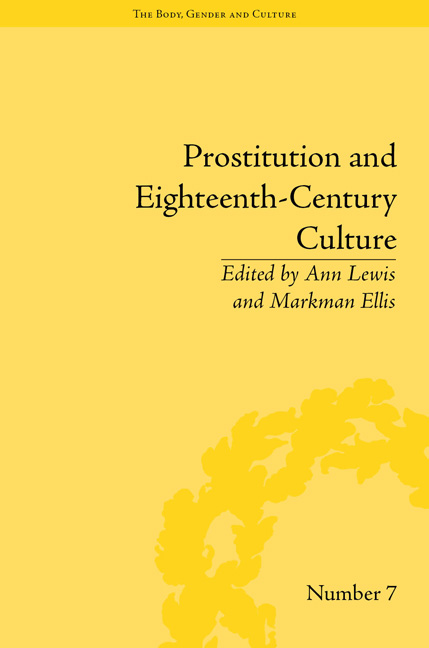Book contents
- Frontmatter
- CONTENTS
- Acknowledgements
- List of Contributors
- List of Figures and Tables
- Introduction: Venal Bodies – Prostitutes and Eighteenth-Century Culture
- Part I (Auto)Biographical and Classificatory Fictions: Madams, Courtesans, Whores
- 1 Classifying the Prostitute in Eighteenth-Century France
- 2 In Her Own Words: An Eighteenth-Century Madam Tells Her Story
- 3 ‘All the World Knows Her Storie’: Aphra Behn and the Duchess of Mazarin
- 4 Marie Petit's Persian Adventure (1705–8): The Eastward Travels of a French ‘Concubine’
- 5 ‘A First-Rate Whore’: Prostitution and Empowerment in the Early Eighteenth Century
- Part II Visibility and Theatricality: Fiction, Image and Performance
- Part III The Magdalen House: Marriage, Motherhood, Social Reintegration
- Part IV Wider Perspectives: Constructing the Prostitute in Social History
- Notes
- Index
1 - Classifying the Prostitute in Eighteenth-Century France
from Part I - (Auto)Biographical and Classificatory Fictions: Madams, Courtesans, Whores
- Frontmatter
- CONTENTS
- Acknowledgements
- List of Contributors
- List of Figures and Tables
- Introduction: Venal Bodies – Prostitutes and Eighteenth-Century Culture
- Part I (Auto)Biographical and Classificatory Fictions: Madams, Courtesans, Whores
- 1 Classifying the Prostitute in Eighteenth-Century France
- 2 In Her Own Words: An Eighteenth-Century Madam Tells Her Story
- 3 ‘All the World Knows Her Storie’: Aphra Behn and the Duchess of Mazarin
- 4 Marie Petit's Persian Adventure (1705–8): The Eastward Travels of a French ‘Concubine’
- 5 ‘A First-Rate Whore’: Prostitution and Empowerment in the Early Eighteenth Century
- Part II Visibility and Theatricality: Fiction, Image and Performance
- Part III The Magdalen House: Marriage, Motherhood, Social Reintegration
- Part IV Wider Perspectives: Constructing the Prostitute in Social History
- Notes
- Index
Summary
The figure of the prostitute is common in the canonical literary texts of eighteenth-century France, as well as proliferating in a host of lesser known sentimental, libertine and pornographic novels. In fact, it is difficult to think of any novels of the period (at least those written by men) that do not include them in some form or other. However, compared to the large field of criticism dealing with the prostitute in nineteenth-century French literature and culture (or in the eighteenth-century English context), there is relatively little criticism relating to the eighteenth-century French field. This reticence may at least in part be due to the problems encountered when trying to define the category ‘prostitute’ itself. The first part of this article will explore various facets of this defining ambiguity, and I will then turn to two French writers from the late eighteenth century, Louis-Sébastien Mercier and Nicolas-Edme Rétif de la Bretonne, who explicitly set out and categorize different types of venal women, through a series of shifting classificatory schema.
This article will examine the unstable and at times contradictory ways in which these different sets of categories are defined and ordered, with a particular focus on the mediation of a series of anxieties relating to the structure of society more generally.
- Type
- Chapter
- Information
- Prostitution and Eighteenth-Century CultureSex, Commerce and Morality, pp. 17 - 32Publisher: Pickering & ChattoFirst published in: 2014



